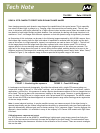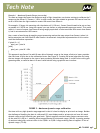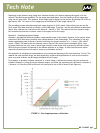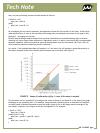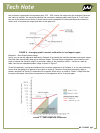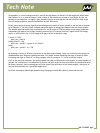
Tech Note
2
For example, in a 4-bit overlap scenario, we still set the shutter for Sensor B to be roughly 64 times faster
than Sensor A (i.e., a pixel on Sensor A with a value of 256 would have a value of 4 on Sensor B). But, de-
pending on our objective, we apply a post processing factor of less than 64 and add an offset value to get
the two output graphs to intersect somewhere around 768 counts.
Finally, use a post processing algorithm that averages the values of Sensor A and B in the last bit as illustrat-
ed in Example 3. This will create a smooth transition region to merge the slopes of the two output graphs.
The sample algorithm below uses a multiplier of 4 and an offset of 720 to produce a dual-slope graph that
compresses the upper 6 bits of light intensity received (64,512 counts) into the 2 upper bits of the image
output (~3,000 counts) for a 12-bit image that spans 16-bits of dynamic range.
if (pixel A < 512){
pixel_out = pixel A
}elseif (pixel B < 16){
pixel_out = (pixel A + ((pixel B * 4)+720))/2
}else{
pixel_out = (pixel B * 4) + 720
}
By applying a variety of different equations to this dual-slope concept, users can utilize the two sensors to
accommodate many different lighting scenarios. This might include attening the slope of Sensor A while
increasing the slope of Sensor B, or using complex math to create an “S” curve in the nal output.
In all of the previous examples, the shutter speed was used to calibrate the two sensors. It is also possible to
use gain for calibration or a combination of shutter and gain to get as close as possible to precise calibration.
Be aware, however, that increasing gain will also impact the noise level of the sensor output, which may or
may not be acceptable for a particular application.
For more information about high dynamic range imaging or the AD-081 camera, please contact JAI.
NO. TN-0902 pg 6



